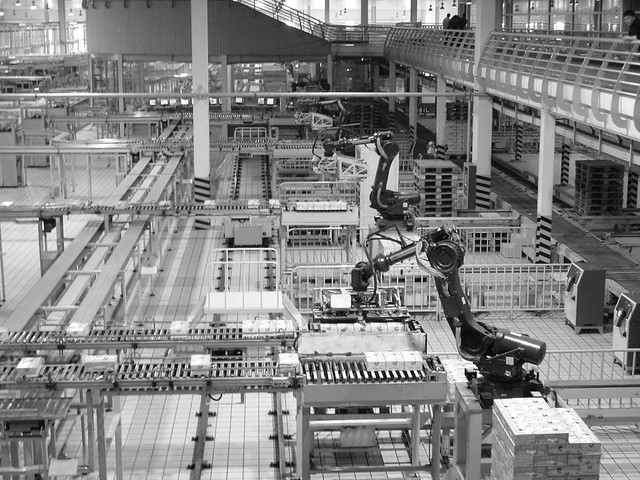In his research paper Toward a Theory of Architecture Machines Nicholas Negroponte discusses the advantages of self-developing machines particularly in the field of architecture, identifying the interaction of humans and technology as evolutionary. Negroponte suggests a hypothesis claiming that the authorship of a design work created by a machine belongs unquestionably to the designer as long as the product is based on precise information added by the designer. Certainly the question of authorship becomes cryptic whether machines are able to act independently from any human input.
Doubtlessly, computer-aided design is being relevant for architectural design processes. However, in Negropontes point of view technology can only play a significant role in human lives if machines are not only able to produce, but have superior abilities. According to Negroponte’s work, machines can give responses to environmental changes because any random sequence will somehow contain all solutions. If future technology is able to adapt and learn how to learn it will improve human’s as well architect’s lives. The author states that it is crucial for self-improving machines to have five main features in order to be considered evolutionary. The heuristic method will only provide the optimal solution by limiting the searching process. By rote learning technology is able to compare similar situations and associate an event with a response. The conditioning device will enable technology to deal with all non-exceptional data and give responses to standardized events by employing conditional reflexes. The reward sector will function within reviewing or observing results by the designer to evaluate the machine’s operations. The exponential forgetting appliance will allow machines to learn and forget in order to sort out irrelevant or obsolete data. Connected with human data input and a parent machine these features will be elements of a superior machine body, the architecture machine. The parent machine will provide power, stored data and a communication network. Furthermore, Negroponte specifies three required properties of the interface which are essentially relevant in order to authorize machines to produce individually. The event is crucial for the perception of senses while the manifestation will enable technology to analyse and evaluate the data of an event. The representation will eventually allow the mapping of information and transferring it to other machines. According to Negroponte artificial intelligence will have the potential to challenge, question and improve human’s life.
The research paper published by Nicholas Negroponte provides an advanced vision of the future integration of technology into human’s life. The interaction between mankind and machines has been intensified over the last centuries and I can definitely imagine the world changing in a similar way as Negroponte is illustrating. Technology merges with human life already in several fields as for example communication, information, science and certainly architecture as well. Nevertheless, even if machinery is adaptable and self-improving it will mainly provide average solutions as an optimal result of comparing a variety of individual cases. In my regard, allowing technology to make decisions on our behalf could also limit individuality. As Jona Friedman states, “The average man does not exist, there are only individuals.” In my point of view, technology can only improve human life if it is able to provide new solutions instead of optimal solutions. For example most people visiting a foreign city would follow a route suggested by Google Maps. Obviously the technical device has chosen the optimal route, but is it actually the most beautiful and most exciting as well?
The more technology is involved in our world, the less humans will be personally involved in decision processes. As an example I would like to point out war drones used for violent operations. On the one hand the use of such technologies in war will certainly improve the lives of many soldiers who could evade the danger of being physically involved in a battle. One the other hand, if drones would be self-controlled, can we be confident with an emotionally and morally incapable machine deciding about human life on a battlefield? Nonetheless, considering that tragedies as the nuclear catastrophe in Tschernobyl are fundamentally based on human failure and obsolete technologies, could disasters like this have been avoided by using advanced technologies? I find it very difficult to define the evolution of machines as merely good or bad. Technology will be increasingly integrated in mankind’s life eventually. However, in my opinion advanced technology should be a tool providing new potentials of exploring the world. Machinery should not be a replacement for human brains, it is supposed to be an extension.
research proposal:
In his book War in the Age of Intelligent Machines Manuel De Landa deals with the symbiotic relation between humans and machines. In his work, he focuses on diverse fields such as for example architecture and artificial intelligence. According to De Landa technology invention has to be inserted into social practises in order to achieve absolute efficiency. As part of my personal research I would like to investigate in De Landa’s theories questioning which domains in human life can actually be improved by technology. Furthermore, I would like to discover the conditions which are crucially relevant for a symbiotic relationship between mankind and machinery.
– Robots replace humans in China 2.0 by Cory M. Grenier CC BY-SA 2.0

